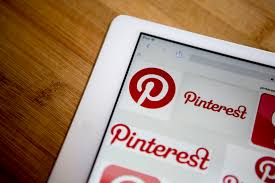Pinterest’s IPO Price Puts These Big Investors Underwater

The three founders of the online ideas board known as Pinterest are expected to become millionaires after the company goes public later this month—and some early investors are also poised to profit.
But not everyone.
On Monday, Pinterest revealed that shares would likely be priced between $ 15 to $ 17 apiece—valuing Pinterest at as much as $ 11.3 billion. An impressive figure—but not for those that bought into the company in 2017 at a $ 12.3 billion valuation.
Based on Pinterest’s IPO filing, some investors including Goldman Sachs, Kleiner Perkins, the Vanguard Group, and John Hancock Investments first acquired their stakes in the online pin-board maker during the Series G and Series H funding rounds—at a time when shares were valued at $ 21.54 each, filings say. If the IPO prices at the upper end of the range, that would still be 25.7% below what those firms paid, according to SEC filings and investor information from PitchBook.
Vanguard for example reports in its most recent filing from the fourth quarter that it holds 1.7 million shares of Pinterest across two funds. That stake is now worth roughly $ 27.5 million, compared to the $ 37 million it would have been worth at Pinterest’s Series G round, when Vanguard first made its investment.
In comparison, very early investors such as Bessemer Venture Partners and Andreessen Horowitz, who first invested in Pinterest roughly a year after the first prototype was launched, paid about 17 cents and 72 cents a share respectively for their stakes in the firm. Both venture funds have board seats at Pinterest, and based on PitchBook data, also added to their stakes as the firm’s valuation grew. Fidelity also purchased 1.4 million shares in 2007 at $ 21.54 each, well above the IPO valuation.
“The proposed pricing of the Pinterest IPO below its private valuation is further evidence that valuation excesses exist in the private market thanks to an unprecedented inflow of capital compared to the more rationale public markets,” said Kathleen Smith, principal at Renaissance Capital.
Vanguard and Goldman Sachs declined to comment. John Hancock, and Kleiner Perkins did not respond to immediate requests for a statement.
No matter what price these investors paid, they do have something valuable: Shares that give them some ability to vote. Their pre-IPO convertible preferred stock will convert into Class B shares upon the company’s IPO. This class of shares have 20-to-1 voting ratio compared to the Class A shares currently being marketed to buyers.
And for Goldman Sachs, there’s another silver lining. The bank is one of three lead underwriters of Pinterest’s IPO and will be the ‘stabilization agent’—in charge of steadying trading in Pinterest when it debuts, Bloomberg reports. According to PwC, IPO underwriting fees generally are equal to about 4-7% of gross proceeds.
There may still also be reprieve for others who bought Pinterest shares high. Pricing an IPO is not a science, and those targets often move several times before the actual offering. Moreover, companies going public are often priced to “pop” during their first day on the market, a move designed to generate positive buzz. In 2018, IPOs rose 15.7% on average during their first day of trading, according to data from Renaissance Capital.


